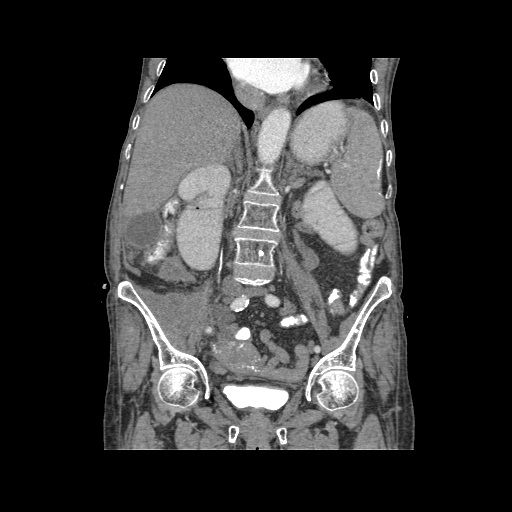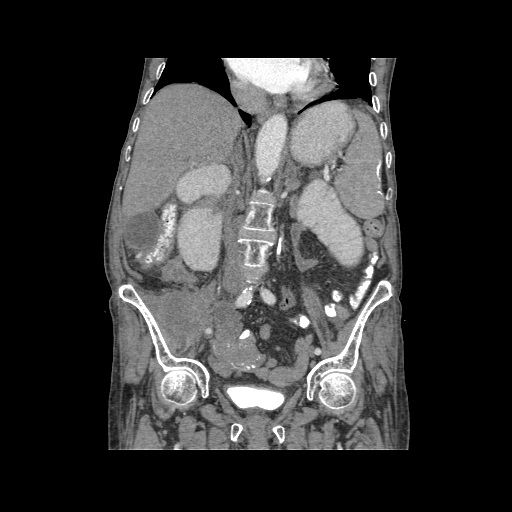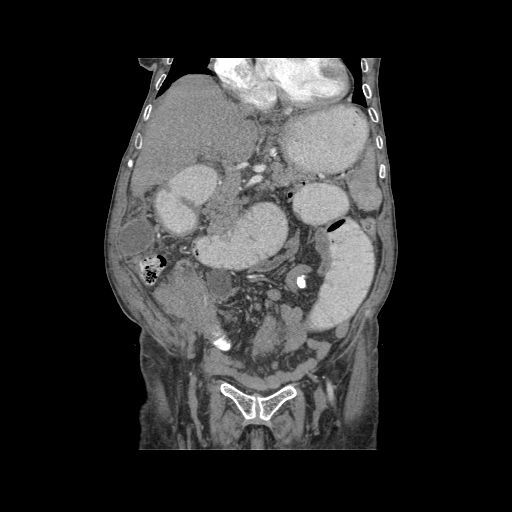Ileocecal Adenocarcinoma
A 55-year-old woman presented to the surgical emergency unit with symptoms of acute intestinal obstruction for the last three days and worsening over the last 24 hours.
A 55-year-old woman presented to the surgical emergency unit with symptoms of acute intestinal obstruction for the last three days and worsening over the last 24 hours.











Findings: Marked distention of the stomach, small bowel loops and irregular heterogeneous mass involving both the cecum and the terminal ileum with abrupt transition on the right colon, mild fat stranding, and small mesenteric lymph nodes.
Diagnosis: Ileocecal adenocarcinoma with subsequent intestinal obstruction.
Discussion: Adenocarcinomas of the cecum account for one-fourth of all colic adenocarcinomas. They have the same general and multi-detector row CT features as all other colic adenocarcinomas, including marked asymmetric colic wall thickening, short segment involvement, and abrupt change from normal to abnormal segments of colon.
However, cecal adenocarcinomas have a tendency to be large, polypoid, and bulky and may act as the lead point for an intussusception. Although they may occupy a large proportion of the colic lumen, they rarely cause obstruction and often grow without clinical manifestations for long periods of time. Cecal adenocarcinomas may demonstrate mild local infiltration, even without perforation. However, wall thickening is more severe relative to pericolic infiltration than in most acute inflammatory diseases, particularly diverticulitis.
The distal ileum may be affected and abnormally thickened in up to 10 percent of patients with right colic cancer as a result of tumor extension or, less commonly, a nontumoral process (congestion and edema).
References:
1. GoreRM. Colorectal cancer: clinical and pathologic features. Radiol Clin North Am1997;35:403–429.
2. JangHJ, Lim HK, Lee SJ, Lee WJ, Kim EY, Kim SH. Acute diverticulitis of the cecum and ascending colon: the value of thin-section helical CT findings in excluding colonic carcinoma. AJR Am J Roentgenol2000;174:1397–1402.
3. KimAY, Ha HK, Seo BK, et al. CT of patients with right-sided colon cancer and distal ileal thickening. AJR Am J Roentgenol2000;175:1439–1444.
Doaa Ibrahim, MD in radio-diagnosis, Zagazig University Hospitals and TechnoScan Centers in Egypt
Meta-Analysis Shows No Difference Between bpMRI and mpMRI in Ruling Out csPCa
March 6th 2025In an 18-study meta-analysis involving over 4,600 patients, researchers found that bpMRI and mpMRI had equivalent pooled negative predictive value (NPV) of 92 percent for clinically significant prostate cancer (csPCa).
Is MRI Contrast Enhancement Necessary for Long-Term Monitoring of Diffuse Glioma?
March 4th 2025In a comparison of contrast-enhanced T1-weighted (CET1w) MRI (and T2-weighted MRI/FLAIR imaging, researchers found that only three out of 82 cases of glioma progression were solely detected with CET1w MRI.